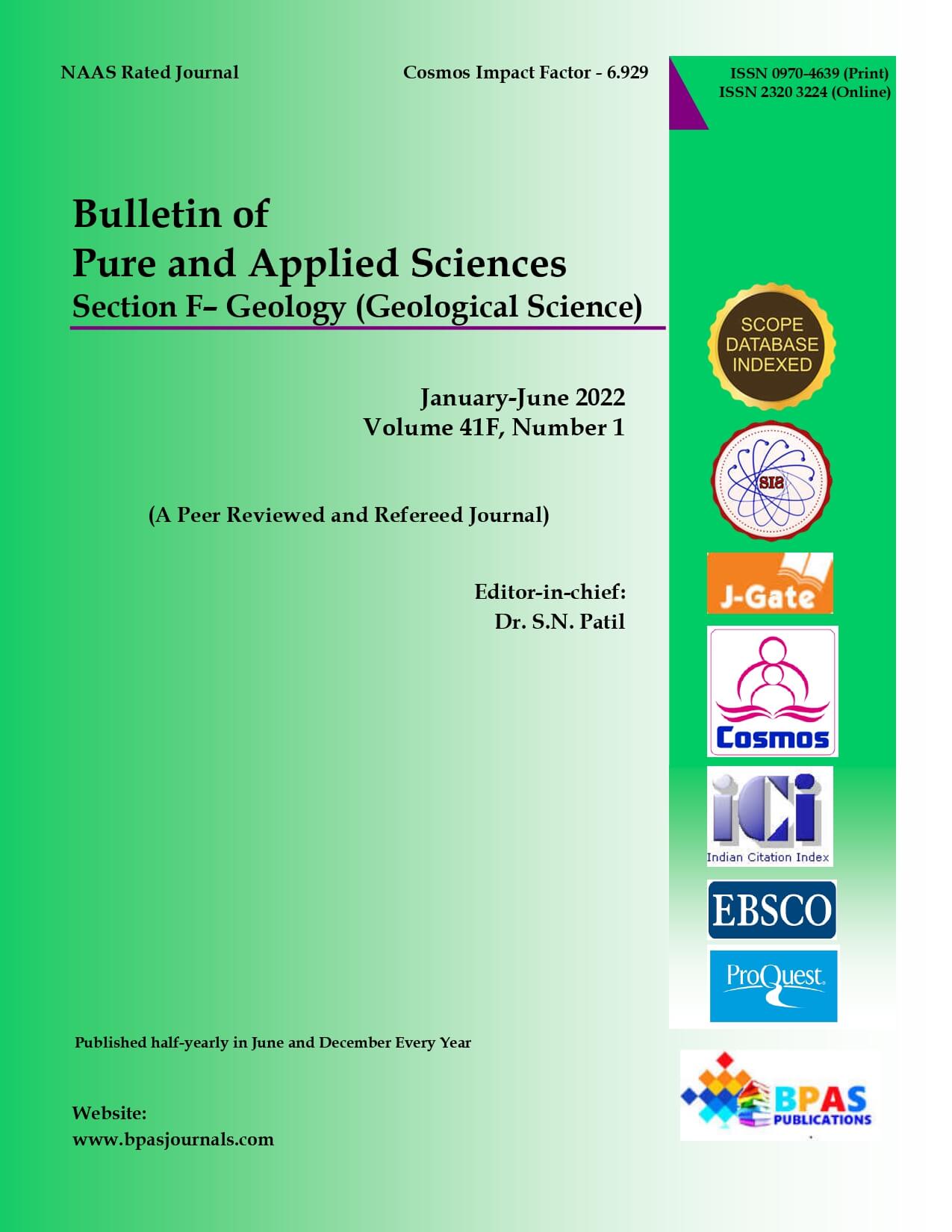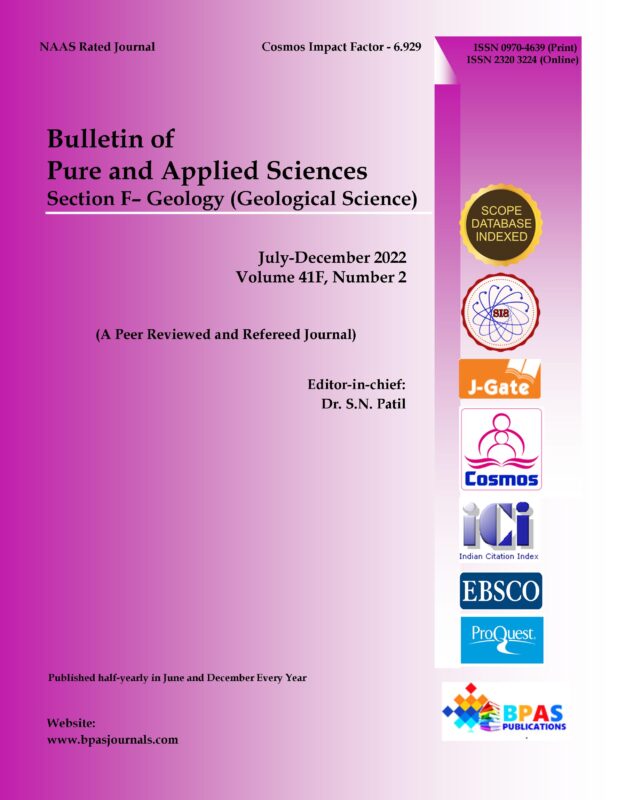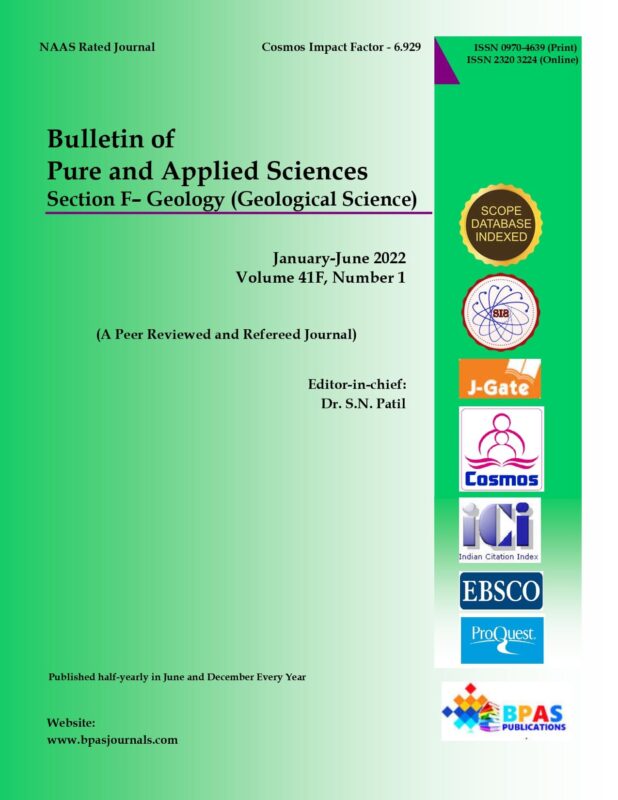Groundwater Acidification and Impact of Wastewater Infiltration on Groundwater Quality of Pune Metropolitan Region, Maharashtra, India
9.38$
Year : 2022,
Volume & Issue : BPAS-Geology 41F(1), JAN-JUN 2022
Page No. : 70-89,
Article Type : Original Aticle
Article DOI : 10.5958/2320-3234.2022.00007.5 (Received on 20.12.2021, Revised on 28.04.2022, Accepted on 16.05.2022)
Categories: 41F(1), JAN-JUN 2022, BPAS-Geology
Description
Description
*A Supekar1, N. J. Pawar2
Author’s Affiliation : 1. 1Department of Geology, Savitribai Phule Pune University, Pune, Maharashtra 411007, India. 2. 2D. Y. Patil Medical University, Pimpri, Pune, Maharashtra 411018, India.
Corresponding Author : A Supekar, Department of Geology, Savitribai Phule Pune University, Pune, Maharashtra 411007, India.,
E-Mail:-ashwinis@unipune.ac.in
Abstract
Acidification is a natural process directly proportional to the rise in population. Wastewater recharge is an important contributor. Increased waste leakage is considered to be a major and obvious source of groundwater adulteration. Acidification of groundwater is commonly associated with anthropogenic activities. Anthropogenically derived pollutant deposition augments the rate of acidification, which in turn exceeds the natural neutralizing capacity. An important consequence of acidification is an increased human introduction to toxic elements via food and drinking water resulting in potentially adverse health effects (Thordarson et al., 1996). Acidification is described as the loss of nutrient bases (calcium, magnesium, and potassium) via the process of leaching and their replacement by acidic elements (hydrogen and aluminum) (Air pollution Information System). Acidification of groundwater affects the natural environment like soils, waters, flora, and fauna, it is considered to be the most serious environmental issues. Groundwater acidification severely affects the regions. A variety of factors like land use, soil characteristics, flow patterns, precipitation characteristics, and depth to the groundwater table are responsible for this process. However, weathering of parent material is the chief mode in which cations are replenished, other soil processes such as adsorption and microbial reduction of SO4 also assist to ameliorate acidification. High concentrations of almost all major cations and anions resulting due to the infiltration of wastewater into the aquifers characterize the groundwaters in the study area. A decrease in pH values and concomitant increase in EC in the areas under intense urbanization suggest acidification of groundwater in PMR. Similarly, the positive correlations between Cl vs. NO3, Cl vs. SO4, and well elevation vs. ionic concentration respectively confirm the role of land use variables and topography on groundwater chemistry and anthropogenic inputs (Foppen, 2002). This study puts forward the view that groundwater acidification in PMR is a function of anthropogenic activity, topography and land-use factors.
Keywords
PMR, Urbanization, Groundwater Acidification, Anthropogenic Inputs.



